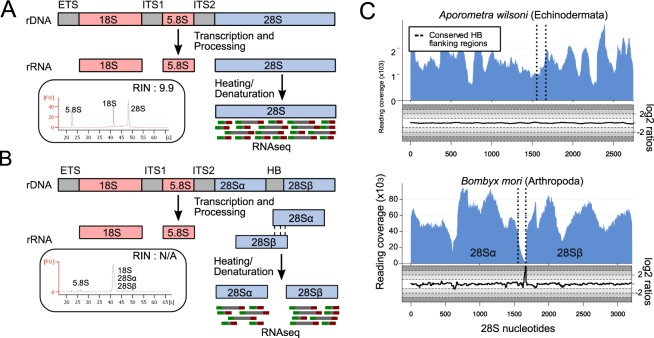Figure 1.
The hidden break and how to diagnose it. (A) After post-transcriptional processing, the eukaryotic pre-rRNA molecule is cleaved to produce the 18S, 5.8S and 28S subunits. The RIN works normally in species that follow this rule. (B) In some species, the 28S subunit gets cleaved into 28Sα and 28Sβ, a phenomenon known as the hidden break. This phenomenon can be detected via electrophorograms where, in species with a break, only one peak, instead of two, is observed. (C) Our method allows the computational discovery of hidden breaks, by mapping RNA-Seq reads onto the 28S rRNA sequence and measuring (i) the read coverage and (ii) the log2 of the ratio of forward/reverse reads mapped in each position of the 28S. In species with a break, e.g. Bombyx mori, a drop in coverage is observed in the middle of the break region. Additionally, the log2 of the forward/reverse reads ratio drops before the hidden break site and increases immediately after it. These features are not observed in Aporometra wilsoni, an animal that does not possess the break. The vertical lines represent the conserved regions flanking the hidden break site.

